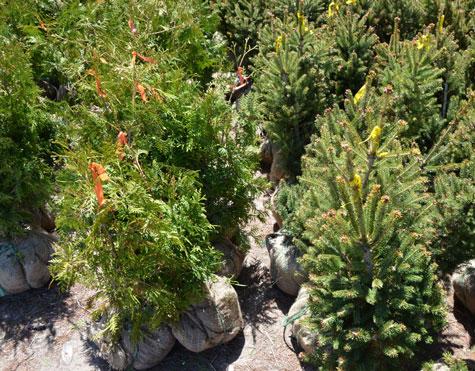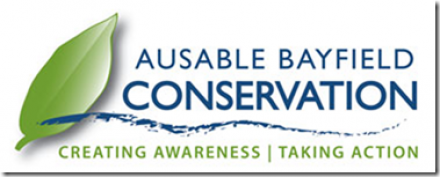Fall tree order form available


Landowners purchasing trees through fall tree order form
Agricultural producers and other rural landowners preserve topsoil, improve forest conditions by planting trees ordered through spring, autumn programs
International Year of Soils great time to plant trees: Ausable Bayfield Conservation;
Fall tree order form is now available online at abca.on.ca
The United Nations General Assembly has declared 2015 is the International Year of Soils. This year is a perfect time to plant trees on your property, said Ian Jean, Forestry and Land Stewardship Specialist with Ausable Bayfield Conservation. “Topsoil is easy to lose and hard to get back,” he said. “Tree planting is one of the ways to preserve that valuable resource.”
Visit Order Trees page now. (Here is the actual order form)
Trees can help preserve valuable topsoil on the land and help to reduce soil erosion, according to Jean. Research says windbreaks can help increase yields as well, he said. “Even when you take into account the loss of production within and beside a tree row, a gain in yield can be realized further into the field that may exceed those losses.”
The Ausable Bayfield Conservation Authority (ABCA) has announced that its fall tree order form is now available online at abca.on.ca. Visit abca.on.ca and type ‘trees’ into the search tool at the top of the home page. (Then press ‘enter’ and the ‘order trees’ page should be at the top of the choices). The page can also be found as a drop-down menu item under the Forestry and Stewardship button on the home page. The fall order form is active until the end of September.
Tree orders in the spring make up the majority of tree purchases each year through Ausable Bayfield Conservation’s tree order program but landowners are also active each autumn ordering trees. “Fall is a great time of year to plant ball and burlap evergreens and potted deciduous trees,” Jean said. “We have two-foot balled and burlap spruce and cedar that are ideal for creating windbreaks and shelterbelts on fields and farms.”
The final days of summer are a great time to think ahead for your tree planting plans for next year, according to the Forestry and Land Stewardship Specialist. “If you are thinking of planting trees next spring, September and October are some of the best times to do your site preparation,” he said. “Starting to plan now also provides time to do proper site assessment and get cost-share funding in place for next spring.”
The fall tree order form is now available at the Ausable Bayfield Conservation office at 71108 Morrison Line, east of Exeter, or online at abca.on.ca. Tree species offered for sale through the fall program are: White Cedar, White Pine, White Spruce, Norway Spruce, Blue Spruce, Silver Maple, Sugar Maple, Red Oak, Bur Oak and Tulip Tree. Elderberry, Chokeberry and Red Osier Dogwood shrubs are also available.)
Grant programs are often available to help offset the cost of planting windbreaks or other stewardship projects. For larger-scale reforestation, cost-share funding is available through Trees Ontario, the Government of Canada’s Habitat Stewardship Program, and other sources. Additional funding may also be available for farmers with an Environmental Farm Plan through the Species at Risk Farm Incentive Program. Funding is also available from the Ontario Ministry of Transportation (MTO) for some windbreak planting projects along provincial highways 4 and 21. Funding for windbreaks is available in Huron County through the Huron County Clean Water Project. “If you are interested in planting trees, give us a call and we will help make it as easy as possible to get grants from the various programs that are available,” Jean said. “In many cases the funding level is 50 per cent, but in some areas you can achieve up to 100 per cent cost recovery.”
Rural landowners may have many reasons for planting trees. Trees provide shade and wind protection that reduces winter heating and summer cooling costs. Windbreaks reduce crop stress, soil erosion and have been shown by many studies to improve long term crop yields. Treed buffers can help protect the quality of water in a creek or river and provide habitat and corridors for wildlife. Some people are planting to replace Ash trees killed by Emerald Ash Borer, an invasive beetle from Asia. Planting a greater diversity of native tree species on your property is the best strategy against future pests, diseases or changes in climate. “People may have lots of reasons to plant trees,” Jean said. “Whatever your reason, we thank you for helping to protect soil, and improve the quality of air and water, by planting trees.”
Ausable Bayfield Conservation staff members can help you with many aspects of land stewardship, including planting plans, site preparation, forest management plans, wildlife habitat improvement, and erosion control advice. Grants may cover up to 100 per cent of the cost of reforestation projects. If you have questions please visit abca.on.ca or contact Ian Jean, Ausable Bayfield Conservation Forestry and Land Stewardship Specialist, at 519-235-2610, or toll-free 1-888-286-2610, or by e-mail. Visit our staff contacts page.

via the Bayfield Conservation Authority | Fall tree order form available
